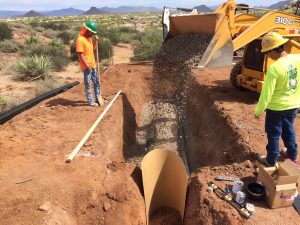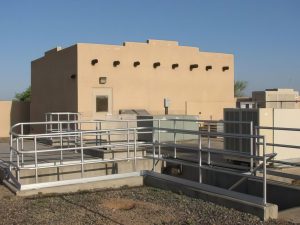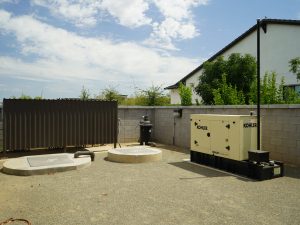Sewage Lift Stations
When water finishes with its use, wastewater is leftover. This extra water gets sent to the local wastewater treatment facility. Transporting water across the city to one location takes a lot of planning and preparation. Underground infrastructure needs to be designed, built, and maintained to ensure wastewater gets to the facility without delay. The wastewater leaves a location via small pipes. All pipes are slightly angled downhill through the city to utilize the gravitational pull to move the water. When the sewage reaches a certain depth, it connects to larger pipes called the regional wastewater collection system. Once the pipes reach the lowest it can go, sewage lift stations are installed. The purpose of the lift station is to pump wastewater upwards, allowing it to flow downhill again towards a wastewater treatment facility.
When entering the lift station, sewage flows into the wet well, an underground tank where it is held for a period. Once filled, sensors detect the wastewater amount, and the pumps turn on. The force main is the name of the pipe that all wastewater goes through before leaving the lift station. There are several types of pumps a lift station can have.
The wet well can hold submersible pumps. These pumps are waterproof and uses the sewage to cool itself down. This process allows the pumps to run for a long time without fear of breaking down or overheating. When submersible pumps do break, it is hard to get in and make repairs. The wet well is emptied, and all sewage cleansed from the pumps before being allowed to make the necessary repairs. This process can be long and unsanitary.
Dry pit pumps are in the dry well, next to the wet well. Tubes go from the wet well, through the wall, and into the pumps in the dry well. These pumps are non-waterproof, so the dry well is sealed tight. Making repairs on dry pit pumps is easier than submersible pumps mainly because sewage is not in the way. Having a separate room for the pumps makes them easily accessible and maintained. If any wastewater leaks through, it can flood the dry well and crash the whole operation. Instead, the pump is cooled down by oil while operating.
Self-priming pumps are an above ground option. Unlike the other two, these pumps are located above the wet well. The pumps do not have impellers to push the water through, instead, it uses suction to pull the water upwards. Not needing a dry well cuts down on the cost and the risk of the station malfunctioning. Repairs are easily managed while not having to go down many levels. These pumps are the simplest to maintain and operate.




